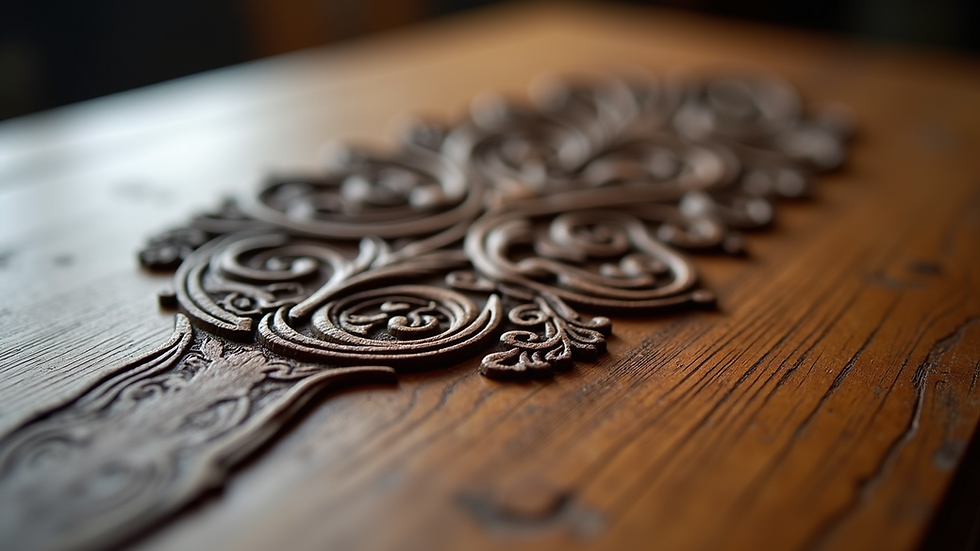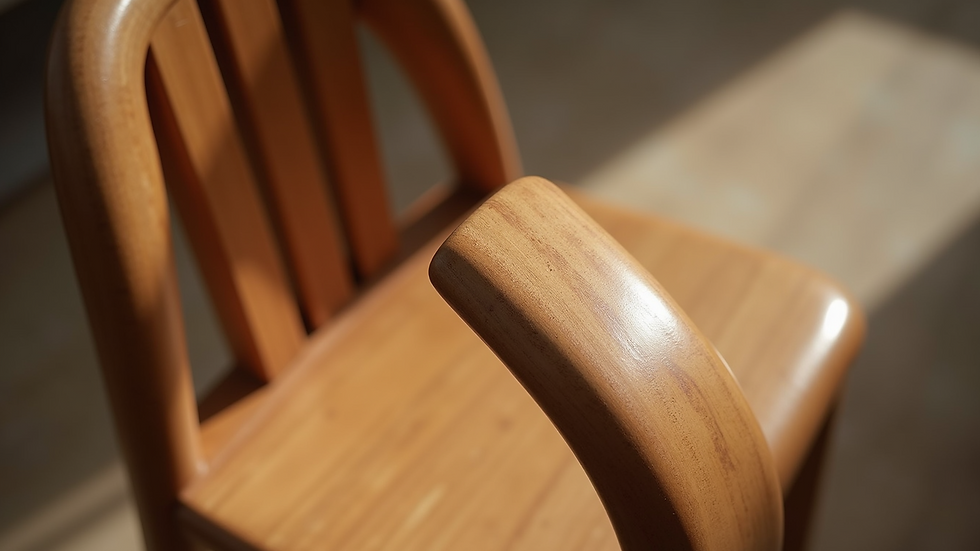The Art of Crafting Unique Wooden Designs
- Henry Arturo
- Aug 16
- 3 min read
Woodworking is more than just a craft - it is an art form that combines creativity, skill, and precision. Creating unique wooden designs requires a deep understanding of wood properties, design principles, and the right tools. Whether you are a hobbyist or a professional, mastering this art can transform simple pieces of wood into stunning works of functional art.
Exploring Unique Wooden Designs
Unique wooden designs stand out because they blend traditional techniques with innovative ideas. These designs often feature intricate patterns, custom shapes, and personalized details that reflect the maker’s vision. To create such pieces, it is essential to:
Understand wood types: Different woods have distinct grains, colors, and hardness. For example, cherry wood offers a warm reddish tone, while maple is known for its durability and light color.
Incorporate natural wood features: Knots, grains, and textures can be highlighted to add character.
Use creative joinery: Techniques like dovetail, mortise and tenon, or finger joints not only provide strength but also add aesthetic appeal.
Experiment with finishes: Stains, oils, and varnishes can enhance the wood’s natural beauty or add color.
By combining these elements, woodworkers can produce pieces that are both functional and visually captivating.

Tools and Techniques for Crafting Unique Wooden Designs
The right tools and techniques are crucial for bringing unique wooden designs to life. Here are some essentials:
Hand Tools
Chisels, hand planes, and carving knives allow for detailed work and fine adjustments.
Sandpaper and scrapers help achieve smooth finishes.
Power Tools
Table saws, routers, and band saws speed up cutting and shaping.
CNC machines enable precision and complex patterns that are difficult to achieve by hand.
Design Software
Programs like SketchUp or AutoCAD help visualize and plan projects before cutting wood.
Digital designs can be transferred to CNC machines for exact execution.
Finishing Techniques
Applying stains or paints can change the wood’s appearance.
Using wax or oil finishes protects the wood and enhances its texture.
Mastering these tools and techniques allows woodworkers to push the boundaries of traditional woodworking and create truly unique pieces.

How much does custom carpentry cost?
When considering unique wooden designs, understanding the cost of custom carpentry is important. Prices vary widely depending on factors such as:
Material quality: Exotic or rare woods cost more than common varieties.
Design complexity: Intricate patterns and detailed joinery require more time and skill.
Size and scale: Larger pieces naturally require more materials and labor.
Labor and craftsmanship: Highly skilled artisans charge premium rates for their expertise.
On average, custom wooden furniture or decor can range from a few hundred to several thousand dollars. For example, a handcrafted wooden dining table with unique inlays might cost between $1,500 and $5,000 depending on the wood and design complexity.
To get an accurate estimate, it is best to consult with professionals who specialize in custom carpentry. They can provide tailored quotes based on your specific needs and preferences.
Tips for Designing Your Own Unique Wooden Pieces
Creating your own unique wooden designs can be rewarding. Here are some practical tips to help you get started:
Start with sketches: Draw your ideas on paper to visualize shapes and proportions.
Choose the right wood: Match the wood type to the project’s purpose and desired look.
Plan joinery carefully: Strong joints ensure durability and add to the design.
Incorporate mixed materials: Combining wood with metal, glass, or stone can create striking contrasts.
Practice finishing: Test stains and finishes on scrap wood before applying to your project.
Take your time: Precision and patience are key to achieving high-quality results.
By following these steps, you can develop your skills and create pieces that are truly one-of-a-kind.

The Last Touches That Make a Difference
The final details can elevate a wooden design from good to exceptional. Consider these finishing touches:
Custom hardware: Unique knobs, handles, or hinges can complement the wood’s style.
Engraving or inlay: Adding personalized engravings or inlaid materials like mother-of-pearl adds sophistication.
Protective coatings: Applying polyurethane or lacquer protects the wood from wear and enhances longevity.
Proper maintenance: Regular cleaning and occasional refinishing keep pieces looking their best.
Attention to these details ensures your wooden designs remain beautiful and functional for years to come.
Crafting unique wooden designs is a fulfilling journey that combines creativity, skill, and attention to detail. Whether you are creating a simple shelf or an elaborate piece of furniture, the art of woodworking offers endless possibilities to express your vision and craftsmanship.



Comments